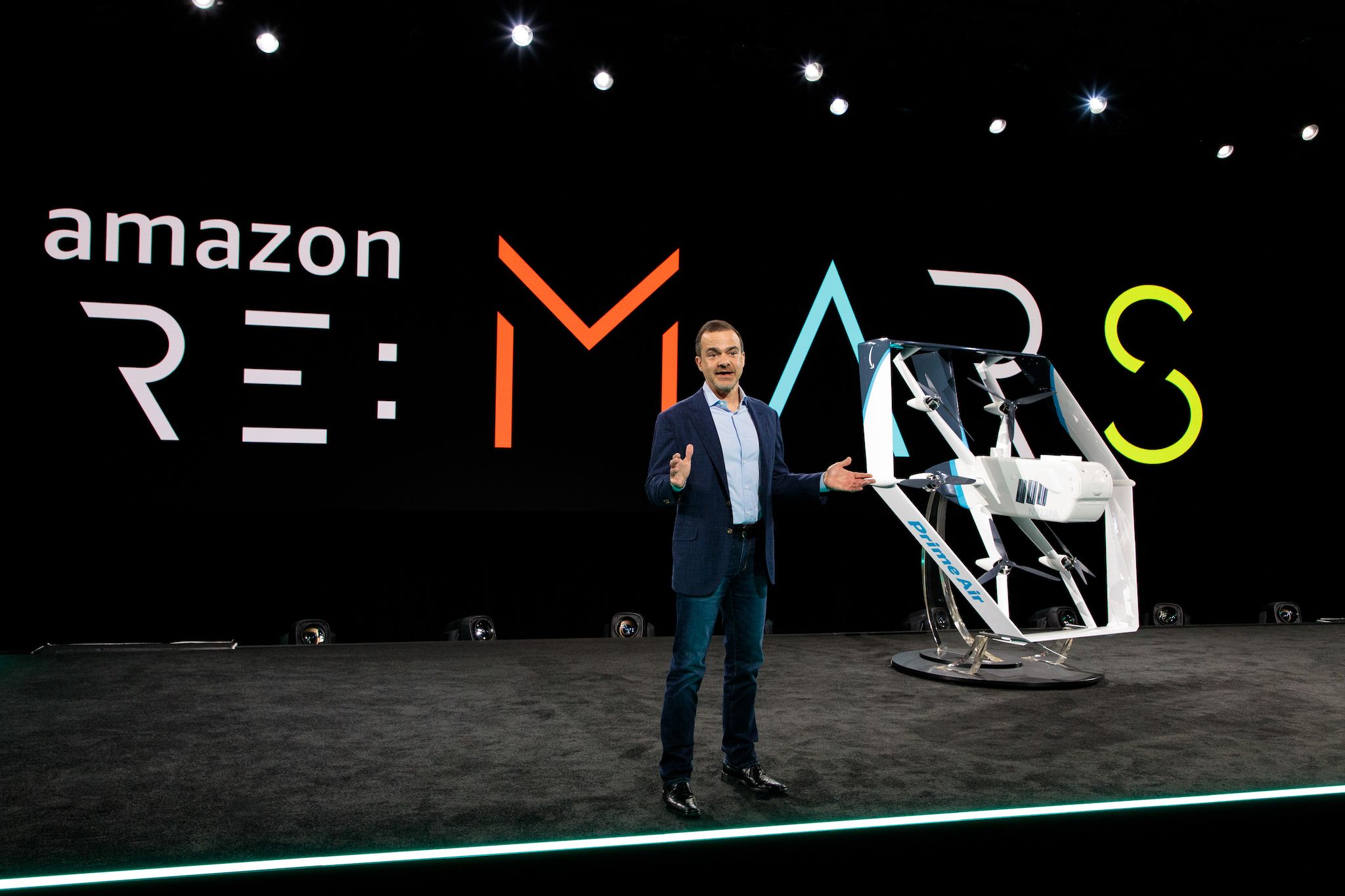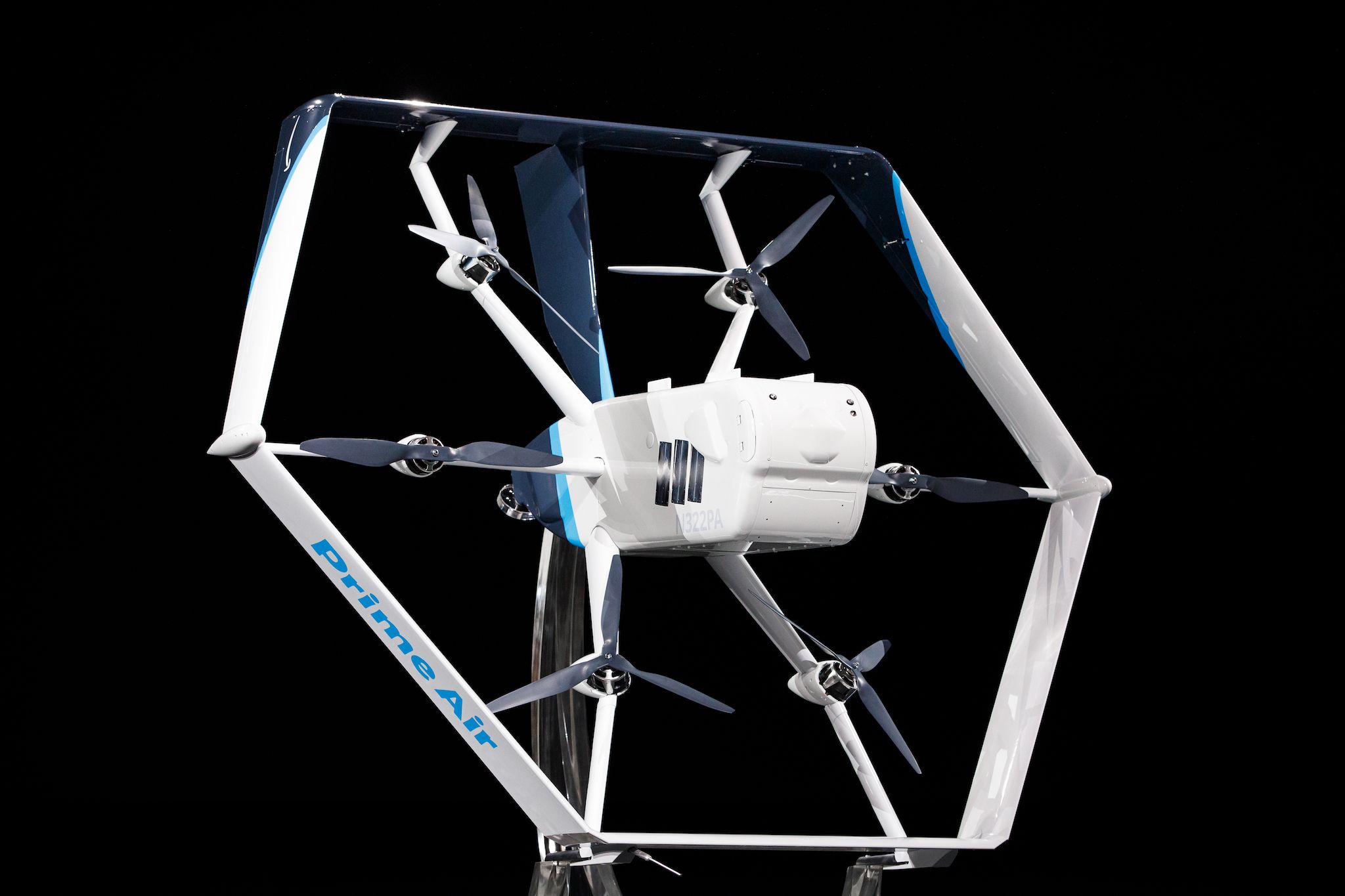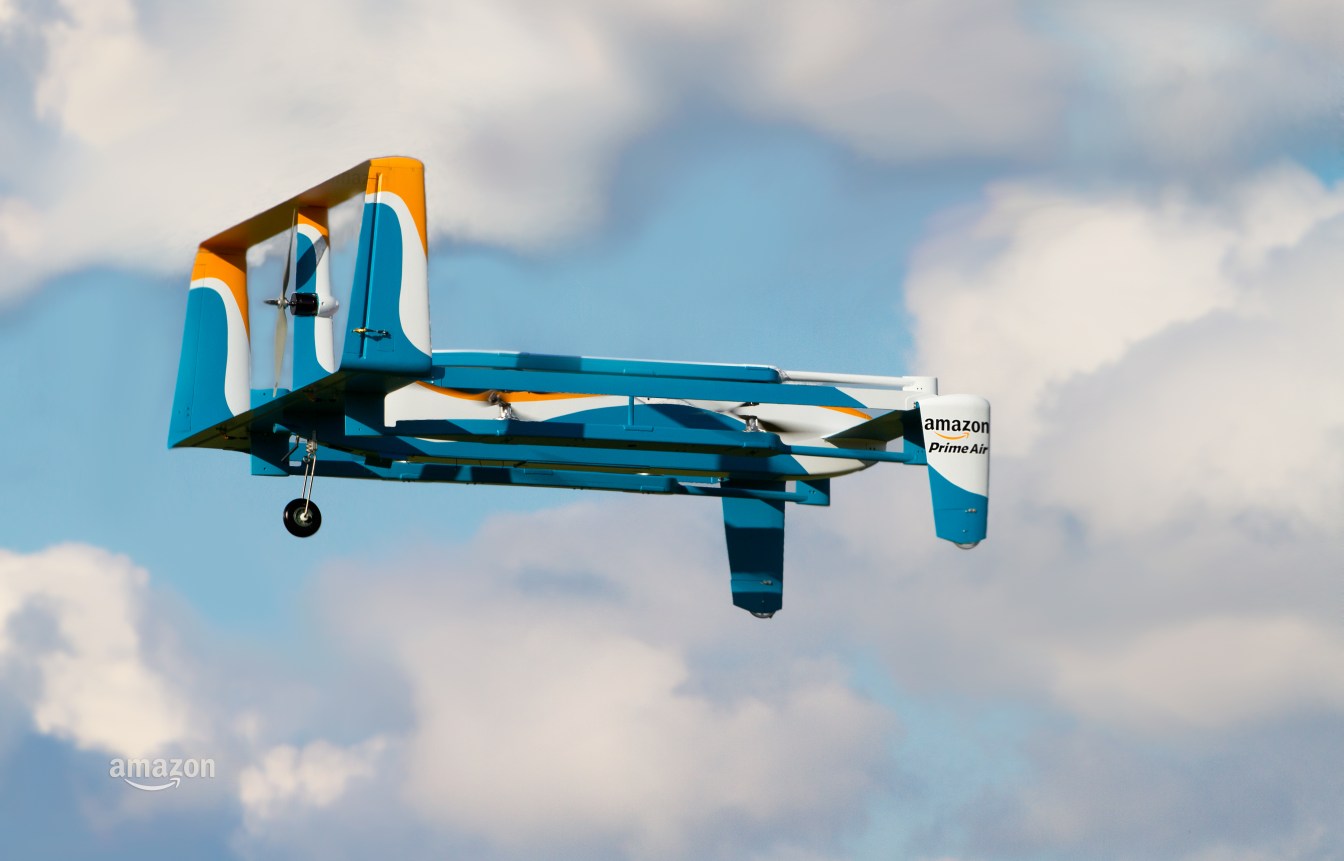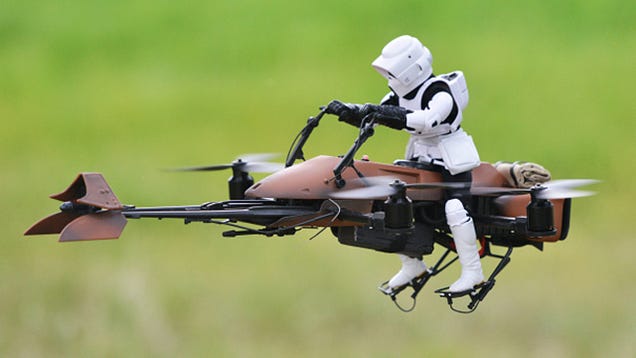Amazon is finally starting to address some of the actual challenges with drone delivery, making us slightly less skeptical
Amazon has been working away at its Prime Air urban and suburban drone delivery for years. Many years. It’s been at least half a decade now. And for the entire time, we’ve been complaining that Amazon has been focusing on how to build drones that can physically transport objects rather than how to build drones that can safely and reliably transport objects in a manner that makes economic sense and that people actually want.
At its re:MARS conference today, Amazon showed off a brand-new version of its Prime Air drone. The design is certainly unique, featuring a hybrid tailsitter design with 6 degrees of freedom, but people have been futzing with weird drone designs for a long time, and this may or may not be a.) what Amazon has actually settled on long-term or b.) the best way of doing things, versus other techniques like Google Wing’s dangly box.
What’s much more exciting is that Amazon seems to now be addressing the issue of safety, and has added a comprehensive suite of on-board sensing and computing that will help the drone deal with many of the complex obstacles that it’s likely to encounter while doing its job.
We should point out right away that Amazon’s pleasant piano music means that you cannot hear what this drone sounds like in flight, and noise is turning out to be one of the biggest problems with urban and suburban delivery drones, as Google Wing has discovered in Australia. Amazon seems to be taking the same “oh people will just get used to it” approach as Google is, and for better or worse that’s probably what’s going to end up happening. Sigh.
The really cool bit about today’s announcement is the addition of sense and avoid to Amazon’s drones, which Jeff Wilke, Amazon’s chief executive for worldwide consumer, detailed in a blog post:
Our drones need to be able to identify static and moving objects coming from any direction. We employ diverse sensors and advanced algorithms, such as multi-view stereo vision, to detect static objects like a chimney. To detect moving objects, like a paraglider or helicopter, we use proprietary computer-vision and machine learning algorithms.
For the drone to descend for delivery, we need a small area around the delivery location that is clear of people, animals, or obstacles. We determine this using explainable stereo vision in parallel with sophisticated AI algorithms trained to detect people and animals from above.
A customer’s yard may have clotheslines, telephone wires, or electrical wires. Wire detection is one of the hardest challenges for low-altitude flights. Through the use of computer-vision techniques we’ve invented, our drones can recognize and avoid wires as they descend into, and ascend out of, a customer’s yard.
This is a good start, although I would push back a little bit on the assertion that Wilke ends with that “our drones are safe.” This technology certainly has the potential to make Amazon’s drones much safer than they were before, but my guess is that statements like “our drones can recognize and avoid wires” would probably be more accurately written as “our drones have the ability to recognize and avoid wires most of the time when conditions are favorable.”
 Photo: Jordan Stead/AmazonJeff Wilke, Amazon’s chief executive for worldwide consumer, unveils the new Prime Air drone at the company’s re:MARS conference.
Photo: Jordan Stead/AmazonJeff Wilke, Amazon’s chief executive for worldwide consumer, unveils the new Prime Air drone at the company’s re:MARS conference.Whether the sensors are effective at low sun angles, when there’s lots of glare after it rains, or in particularly challenging situations like trying to detect black wires against black asphalt from above is unclear. It’s awesome that Amazon is tackling all of this stuff head-on, but it’s important to be very careful not to take these “we’ve solved it” statements at face value until Amazon has shown exactly what their drone can do, which as far as we know they have not.
And even with all this progress, I can’t help but come back to the fundamental question of whether this kind of drone delivery is actually worth it. I love robots, and I’m having a very hard time thinking of this as anything more than a novelty, especially considering the growth of both autonomous vehicles and sidewalk robots (which Amazon is also working on). Amazon brings up the environmental impact of delivery as another argument in favor of drones, suggesting that “an electric drone, charged using sustainable means, traveling to drop off a package is a vast improvement over a car on the road.” Likely true, as long as the car is delivering just one package—I’m not sure how the numbers work out if you’re comparing drones to a loaded delivery van, though. And again, noise pollution needs to be considered, too.
Delivery drones are the right answer, I think, in some cases. Medical supply delivery is one. Rural delivery is another. It’s less clear whether suburban delivery really fills a long-term need, or whether companies like Amazon and Google are mostly just doing it because they can. But either way, it’s great to see Amazon acknowledging these hard problems, and we’re looking forward to seeing some of their technologies, like obstacle avoidance, in action, which Amazon says could happen within months.
SOURCE: https://spectrum.ieee.org/automaton/robotics/drones/amazon-redesigned-prime-air-drone





 Caption: Our system can learn a behavior from a single demonstration delivered within a simulator, then reproduce that behavior in different setups in reality.
Caption: Our system can learn a behavior from a single demonstration delivered within a simulator, then reproduce that behavior in different setups in reality.









